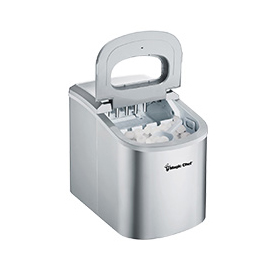The Versatility and Applications of Methylcellulose and Hydroxypropyl Methylcellulose (HPMC)
Methylcellulose (MC) and hydroxypropyl methylcellulose (HPMC) are non-ionic, water-soluble polymer compounds derived from cellulose, a natural polymer that forms the structural component of plant cell walls. These cellulosic derivatives exhibit unique properties that have made them essential in various industries, including pharmaceuticals, food, cosmetics, and construction. This article explores the characteristics, applications, and benefits of methylcellulose and HPMC.
Characteristics of Methylcellulose and HPMC
Methylcellulose is created by methylating cellulose, which enhances its solubility in water. It has the unique capability to form gels when heated and revert to a liquid state upon cooling, making it a valuable ingredient in numerous formulations. HPMC, on the other hand, is produced through the introduction of hydroxypropyl groups, which further increase its solubility and improve its thermal stability. Both compounds are odorless, tasteless, and free of allergens, making them suitable for a wide range of applications.
One of the remarkable features of both methylcellulose and HPMC is their ability to act as thickening agents, emulsifiers, and stabilizers. They provide a desirable viscosity and texture to products, which is crucial in achieving appealing formulations. Their film-forming properties create protective barriers that help maintain moisture and enhance the stability of active ingredients.
Pharmaceutical Applications
In the pharmaceutical industry, methylcellulose and HPMC are widely used as excipients in drug formulation. Their ability to control drug release rates makes them ideal for controlled-release systems, providing sustained therapeutic effects. HPMC is commonly used as a binder in tablet formulations, ensuring the uniform distribution of active pharmaceutical ingredients. Moreover, their thickening properties are employed in eye drops and topical ointments, enhancing the retention time and effectiveness of the medication.
Food Industry Applications
mecellose hpmc

Methylcellulose and HPMC serve important roles in the food industry as well. They act as food additives, contributing to improved texture, moisture retention, and stability in various food products. Common applications include low-fat and gluten-free food products, where these compounds mimic the properties of fat and gluten, respectively. Methylcellulose is often used in products like meat substitutes, ice creams, and baked goods to enhance mouthfeel and texture without adding additional calories. Additionally, their capacity to stabilize emulsions makes them valuable in sauces and dressings, ensuring a consistent product throughout its shelf life.
Cosmetics and Personal Care
In cosmetics, HPMC and methylcellulose are utilized for their thickening and emulsifying properties. They are commonly found in shampoos, conditioners, lotions, and creams. Their film-forming ability helps to enhance the texture and spreadability of cosmetic formulations. Furthermore, they contribute to the stability and appearance of products, preventing separation and ensuring a uniform distribution of ingredients.
Construction Industry
The construction industry also benefits from the unique properties of methylcellulose and HPMC. These compounds are used in cement-based formulations, tile adhesives, and plasters to improve workability and enhance water retention. Their ability to control the viscosity and consistency of construction materials ensures that they adhere well to surfaces and provide a durable finish. Enhanced bonding properties contributed by these cellulose ethers significantly improve the performance of construction materials.
Conclusion
Methylcellulose and hydroxypropyl methylcellulose are remarkable compounds with versatile applications across various industries. Their unique properties—such as water solubility, thickening, emulsifying, and film-forming capabilities—make them indispensable in pharmaceuticals, food, cosmetics, and construction. As research continues to explore new applications, the demand for these cellulose derivatives is expected to grow, paving the way for innovative solutions in product formulation and manufacturing.
-
Rdp Powder: Key Considerations for Wholesalers in the Building Materials IndustryNewsJul.08,2025
-
Key Considerations for Wholesalers: Navigating the World of Hpmc - Based ProductsNewsJul.08,2025
-
Hpmc Detergent: Key Considerations for WholesalersNewsJul.08,2025
-
Key Considerations for Wholesalers: China Hpmc For Tile Adhesive, Coating Additives, Concrete Additives, and MoreNewsJul.08,2025
-
Crucial Considerations for Wholesalers: Navigating the World of Construction MaterialsNewsJul.08,2025
-
Key Considerations for Wholesalers Sourcing Additive For Cement, Additive For Concrete, Additive For Putty from Additive Manufacturer Shijiazhuang Gaocheng District Yongfeng Cellulose Co., Ltd.NewsJul.08,2025




